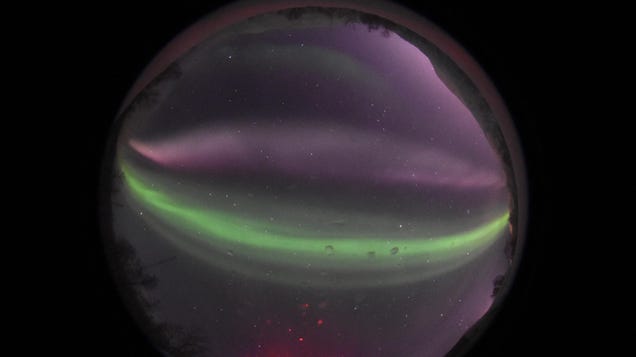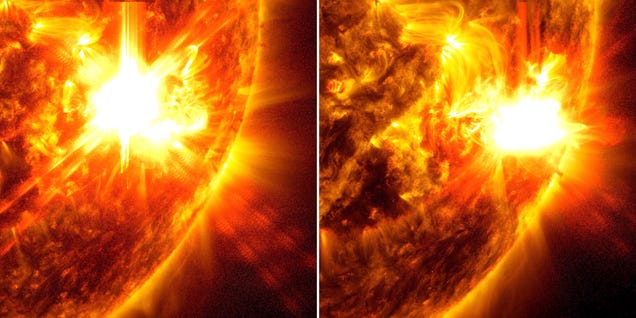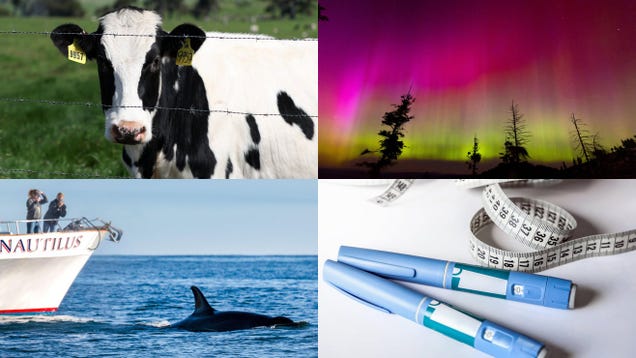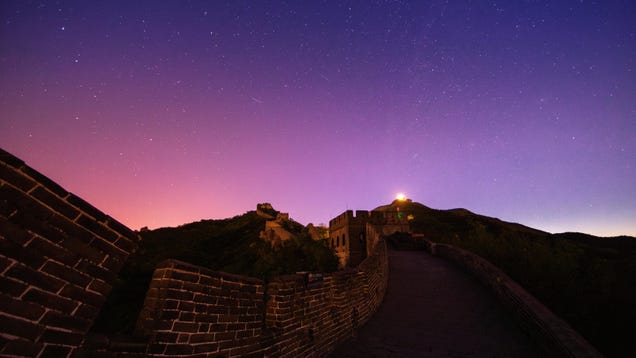
NASA/SDO
A recent outburst from the Sun sent a strong blast of charged particles and radiation towards Mars, allowing scientists to get a rare glimpse at how these events unfold on planets other than Earth.

STEVE, a strange ribbon of purple and green haze discovered by citizen scientists in 2016, just got even weirder. While looking through archival data, a team of scientists discovered that the aurora-like phenomenon has a secret twin moving in the opposite direction.

Compasses at the bottom of the ocean wobbled as a massive solar storm hit Earth last week, giving the instruments two miles under the sea a jolt of magnetic shock and awe.

This week, the Gizmodo science team explored the disturbing trend towards raw milk amid a bird flu outbreak among cattle, and the technological disruptions stemming from the historic geomagnetic storm that triggered stunning auroras across much of the globe. Reporter Ed Cara broke down a study weighing the long term…

Conspiracy theorists on social media have been busy at work peddling their latest conclusion: The magnificent auroras seen over swaths of four different continents over the weekend were caused by a University of Alaska program that studies the ionosphere. Which, of course, is pure nonsense.


